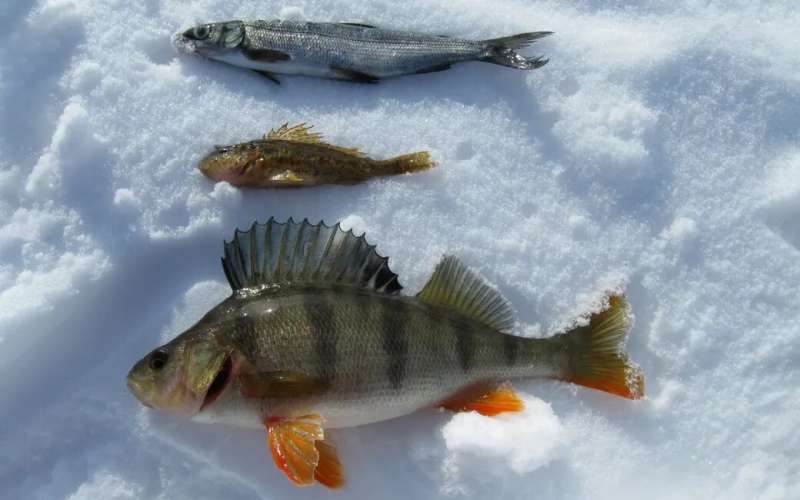This article has been reviewed according to Science X's editorial process and policies. Editors have highlighted the following attributes while ensuring the content's credibility:
fact-checked
peer-reviewed publication
trusted source
proofread
Fish mercury found to peak in winter and near spawning, then reduce after growing season

The pronounced seasonal changes of warm open-water and cold ice-covered seasons dominate natural cycles in Finnish lakes.
"Summer is the growing season of fish followed by weight loss during winter and spring spawning time," says research team leader, Professor Kimmo Kahilainen from the Lammi Biological Station, University of Helsinki.
Significant changes in temperature and other environmental factors during colder months result in lowered metabolism in fish. Additionally, less food is available for fish during this harsh timeframe. Under these conditions, eventually the energy required to grow is not met by the amount of energy taken in, resulting in weight loss and starvation.
This seasonal cycle means that fish mercury in winter and spring can be up to 30%–40% higher compared to summer and autumn. Differences are pronounced in fish feeding on other fish, such as perch and pikeperch, which are important species for both recreational and commercial fishing in the boreal region and continue to be staples in regional dishes. Despite the higher mercury found during these seasons, all fish species in studied southern Finnish lake were below the fish consumption health limit (0.5 mg/kg) for mercury.
Winter is an immensely important driver of natural cycles, but how, and to what extent these colder months influence lake ecosystems is not well understood or just assumed, as minimal field research is conducted during this time of the year compared to warmer months. The nature of the work is demanding, requiring physically intensive and extended periods of time in freezing conditions on potentially unstable surfaces in low light. Such conditions present numerous logical challenges for researchers to contend with and manage effectively and responsibly.
Lead author doctoral researcher Alex Piro from the Lammi Biological Station, University of Helsinki, suggests that "considering our findings in perch and pikeperch, more frequent boreal mercury monitoring in wild fish during winter should be considered due to their higher concentration. When considering the human nutrition and fisheries management perspectives, the sustainable solution would be to consider limiting the fishing near the spawning time."
The paper has been published in the journal Environmental Research.
This study conducted at the University of Helsinki Lammi Biological Station provides valuable insights into the seasonal dynamics of mercury in fish, contributing to ongoing efforts to accurately monitor and understand mercury levels in fish and support informed decision-making.
More information: A.J. Piro et al, Fish muscle mercury concentration and bioaccumulation fluctuate year-round—Insights from cyprinid and percid fishes in a humic boreal lake, Environmental Research (2023). DOI: 10.1016/j.envres.2023.116187
Journal information: Environmental Research
Provided by University of Helsinki


















